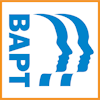BY LINDA V. BERENS
 I am really looking forward to connecting with type practitioners and type enthusiasts at the BAPT 2021 Conference where we can celebrate 100 Years of Type. I do want to point out that type is over 25 centuries old, as its roots go back much farther than Jung’s work. If you are interested in the foundations of type as we know it today, you can read my whitepaper, The Leading Edge of Psychological Type.
I am really looking forward to connecting with type practitioners and type enthusiasts at the BAPT 2021 Conference where we can celebrate 100 Years of Type. I do want to point out that type is over 25 centuries old, as its roots go back much farther than Jung’s work. If you are interested in the foundations of type as we know it today, you can read my whitepaper, The Leading Edge of Psychological Type.
I have been in the type world since 1975 when David Keirsey introduced his students to his Temperament theory and how that relates to dysfunctional behavior as well as functional behavior. Doing my dissertation under his guidance (and critiquing!), I had to read many books from the 1920s. Jung was one of many great thinkers in the 1920s who described different typologies. I’m really not a history fan, but the history of the development of type was fascinating to me as I saw how so many of the type theories fit together and how some just didn’t.
David told me he didn’t create temperament theory, he just ‘fit’ it all together. It is easy to see how introverted Thinking was at work in his contributions. And with my INTP preferences I’ve continued to see what fits and what doesn’t fit as I’ve developed other ways of looking at the 16 personality type patterns using a multiple lens approach to understanding each of the types.
Isabel Myers sparked the ‘type movement’ and made Jung’s work more accessible. That she was a lay person who worked diligently to create a self-report psychological instrument was groundbreaking. This break from traditional psychology and psychiatry continued when David Keirsey self-published Please Understand Me and linked his Temperament Theory to the 4-letter type code. Both of these groundbreaking events have some similarities. They:
- Ignited separate, yet integrated movements
- Put previously professionally controlled information in the hands of lay people
- Made complex information simple enough to be applicable and useful
- Had the power to transform lives and heal individuals and relationships
This start of the type movement seems similar to where it is today when many self-taught, non-credentialed individuals are creating more and more content online. 100 years later type awareness is still of high value.
About 18 years ago, I was going through a challenging time with my business and a friend asked me, “What does evolution want from you?” I didn’t really understand what he meant, but it has been a good question and has led me to a clearer sense of my purpose on the planet. I’m not as interested in the historic events as much as I’m interested in exploring the evolutionary purpose of a movement like the personality type movement and what changes it may have been serving.
- What evolutionary purpose has type served over these years?
- What did type information help people do in the beginning?
- How have the theories and uses of type changed as the times have changed?
- Are they what we need now?
- What do we need going forward in this increasingly polarized world?
We’ve come a long way since the Myers-Briggs Type Indicator® enabled people to have a language to talk about their individual differences. Today’s world is increasingly complex and some of the habitual ways of talking about type may need to change.
I hope you join me at the Conference to explore these questions and identify some key practices and principles that will help us—as type enthusiasts and as type practitioners—use, teach, and apply type in ways that meet the needs of the emerging future. How can we move from polarization to honoring diversity to unity and inclusion? I believe type can help us if we recognize the rich complexity of being human and balance the challenge of being me and still being a part of the larger ‘we’.
About the Author
 Linda V. Berens, Ph.D. (INTP) is recognized internationally for her Multiple Model and developmental approach to type—integrating the works of Jung, Beebe, Keirsey, and her own model of Interaction Styles to help individuals own their strengths and transcend their limitations. She has been a thought leader in the type community since the 1970’s and remains on the leading edge of addressing the complexity of understanding individual differences in the InterStrength™ Certification programs and written materials. Type enthusiasts and practitioners alike look to her skill and expertise to clarify their own best fit types and learn to facilitate the transformative approach that enables us to better navigate this complex world. Email: linda@lindaberens.com.
Linda V. Berens, Ph.D. (INTP) is recognized internationally for her Multiple Model and developmental approach to type—integrating the works of Jung, Beebe, Keirsey, and her own model of Interaction Styles to help individuals own their strengths and transcend their limitations. She has been a thought leader in the type community since the 1970’s and remains on the leading edge of addressing the complexity of understanding individual differences in the InterStrength™ Certification programs and written materials. Type enthusiasts and practitioners alike look to her skill and expertise to clarify their own best fit types and learn to facilitate the transformative approach that enables us to better navigate this complex world. Email: linda@lindaberens.com.

